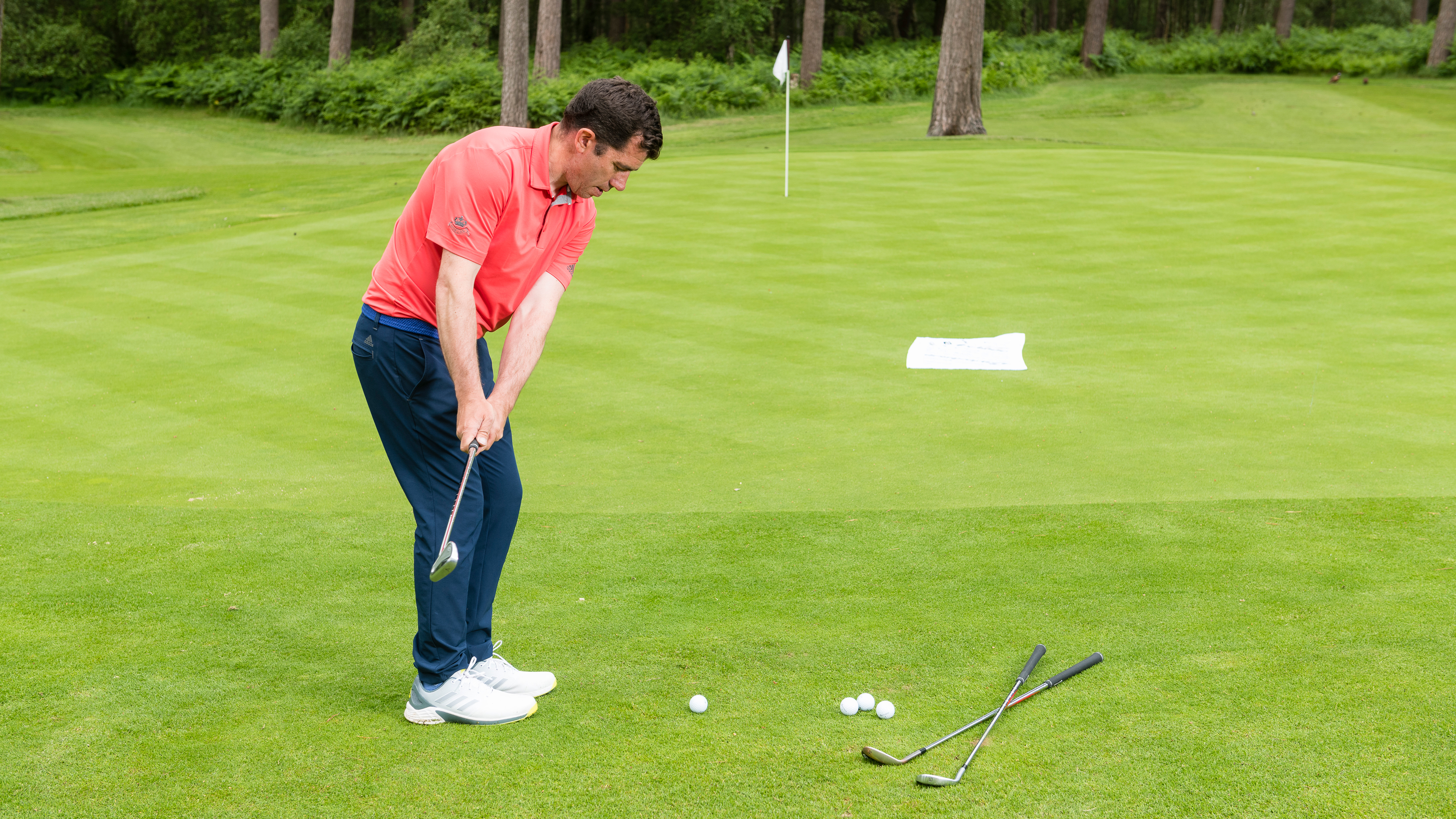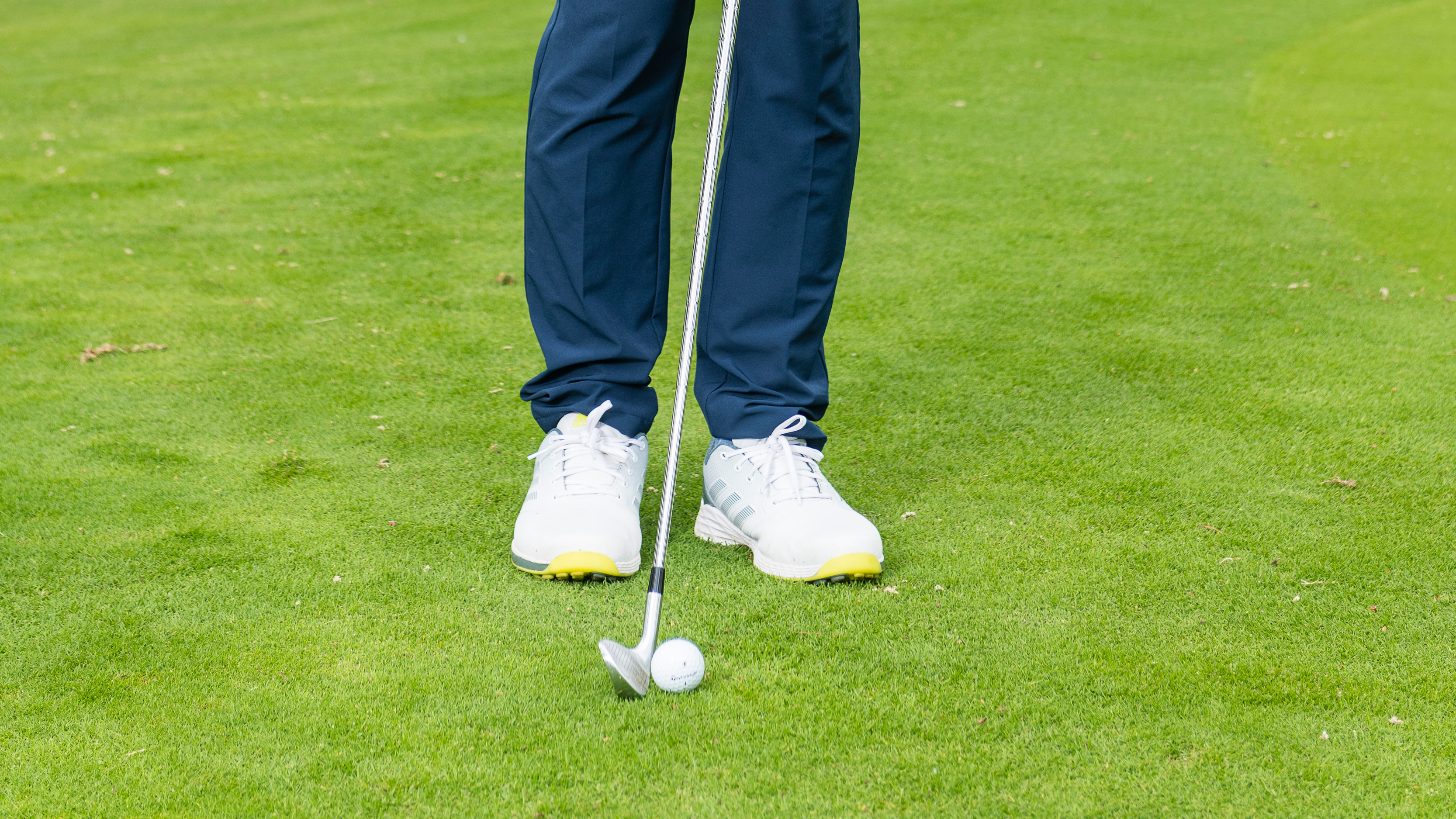Beginners Guide To Chipping
Dan Grieve shares some expert advice and drills on the chipping basics


Golf Monthly created this content as part of a paid partnership with TaylorMade. The contents of this article are entirely independent and solely reflect the editorial opinion of Golf Monthly.
Beginners guide to chipping
When it comes to the short game, honing a consistent strike is half the battle, especially for those who are just getting started. In the video and article below, Dan Grieve, Head Professional at Woburn Golf Club, explains what's required to make solid contact around the greens.
Set-up
Let's start with the set-up - get this right and you are 90% of the way there to making good contact. Firstly, you don’t want too wide a stance - get your feet roughly one club head apart. Your ball position should be just back of centre and you want a slight forward lean of the shaft. If you can get this part right it will make a huge difference to the quality of contact, something that's important in how to spin the golf ball.

Aim to have your feet close together with the lead foot flared slightly
I like to see the lead foot slightly 'flared out', which will help you to get your weight running through your left side. It's this 'pivot line' - from the lead foot, through the knee, hip and shoulder - that you're going to rotate around.
Another important factor is to make sure that the left wrist is nice and flat. You don’t want to get too far away from the ball and create an angle, because that's likely to create lots of wrist hinge. For a chip and run, you're trying to take the wrists out, which you'll see me doing in the video above.
Finally, make sure that your shoulders are level and that your grip isn’t too tight. Most people grip way too tight, so just loosen it a fraction.
Using different clubs
I'm not a huge fan of chipping with the same club all the time; it's much easier to get the ball closer to the pin if you can use the same chipping technique with different clubs.
Get the Golf Monthly Newsletter
Subscribe to the Golf Monthly newsletter to stay up to date with all the latest tour news, equipment news, reviews, head-to-heads and buyer’s guides from our team of experienced experts.
Related: Difference Between Pitching And Chipping
Here's a drill to try - and one you can watch in the video with this article. Put a towel down a third of the way onto the green. The aim is to try and land your ball next to the towel and let it run two thirds of the way out to the pin. Use a 9-iron with the normal chipping technique, as explained above.

Try this towel drill to hone your chipping technique
Move the towel around and experiment with different clubs - and you'll soon have a number of different shots in your armoury. For example, with a 7-iron, you'd be looking to carry it approximately 25% of the way with 75% roll.
With chipping, there’s not one single way to play a shot - it’s what you’re most comfortable with. However, if you use a straighter-faced club and get the ball on the green running as quickly as possible, you might have more joy.
Consistency
Lots of club golfers will practice with a different ball to the one they play with - but this makes it difficult to develop a consistent feel around the greens.
Take the TaylorMade TP5 and TP5x golf balls, for example. The TP5 provides a softer feel of the two premium models, as well as increased greenside spin. We may be talking fractions, but so much of the short game is about feel.
Whichever ball you choose to play with, keep it consistent and use that ball in practice - it could make a big difference.

Location: Woburn GC
Dan is one of the leading coaches in the UK, a Fellow of the PGA and a short-game virtuoso. He has had considerable success with a collection of tour pros, helping them to Order of Merit titles and major victories, and his Short Game School is the most attended in the UK. His students, past and present, include Charley Hull, Georgia Hall, Inci Mehmet and Iona Stephen.
Most common problem:
Swing – over the top , help by getting the basics correct at address and making them aware how to get the club online coming down.
Short game – creating spin and feel around the greens, help by educating on what the short game actually is (weak on purpose) and understand bounce and how they can apply it to different lies/situations.
Greatest success story:
Helping Georgia Hall from World No. 450 to No. 6 and winning a Major, two Order of Merits and Solheim Cup appearances.
Greatest teacher:
Alex Hay was a great influence during my first few years at Woburn. In sport more generally Sir Clive Woodward has taught me how to deliver at the highest level.
Most common fault:
Flipped right hand (hands behind the ball). Understand a correct coil/load going back and how to sequence better coming down so the chest opens up and gives the arms space to deliver a stronger impact. Lots of body action drills to enhance the feel, with and without the ball.
-
 'When The Ball Was In The Air, I Was Like 'You Idiot, What Did You Do?'' - Rory McIlroy Happy To Ride Luck In Impressive Masters Fightback
'When The Ball Was In The Air, I Was Like 'You Idiot, What Did You Do?'' - Rory McIlroy Happy To Ride Luck In Impressive Masters FightbackThe four-time Major winner posted a slightly fortunate bogey-free six-under 66 on Friday to fire himself up into the top-10 at The Masters
By Jonny Leighfield Published
-
 Brooks Koepka Suffers Nightmare Finish To Miss Masters Cut
Brooks Koepka Suffers Nightmare Finish To Miss Masters CutThe five-time Major winner endured a costly bogey-quadruple bogey finish to miss the cut at Augusta National, with Koepka one of the big names missing the weekend
By Matt Cradock Published